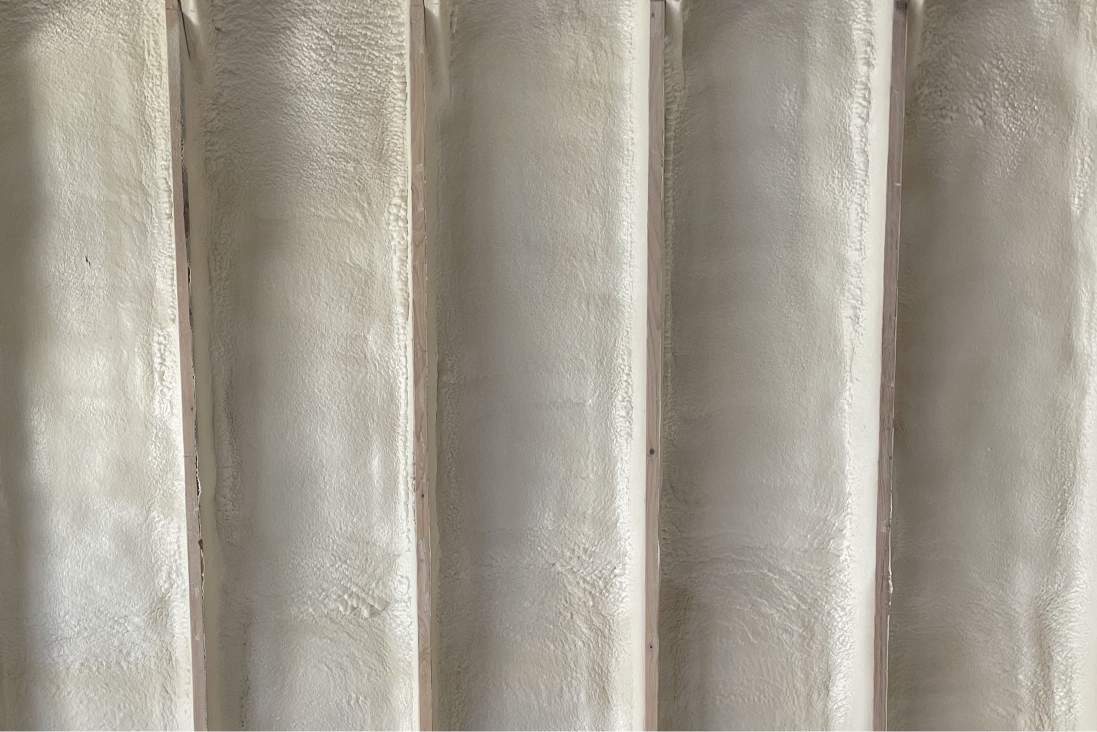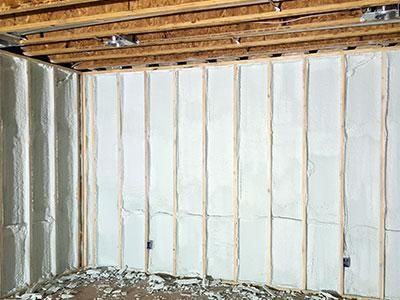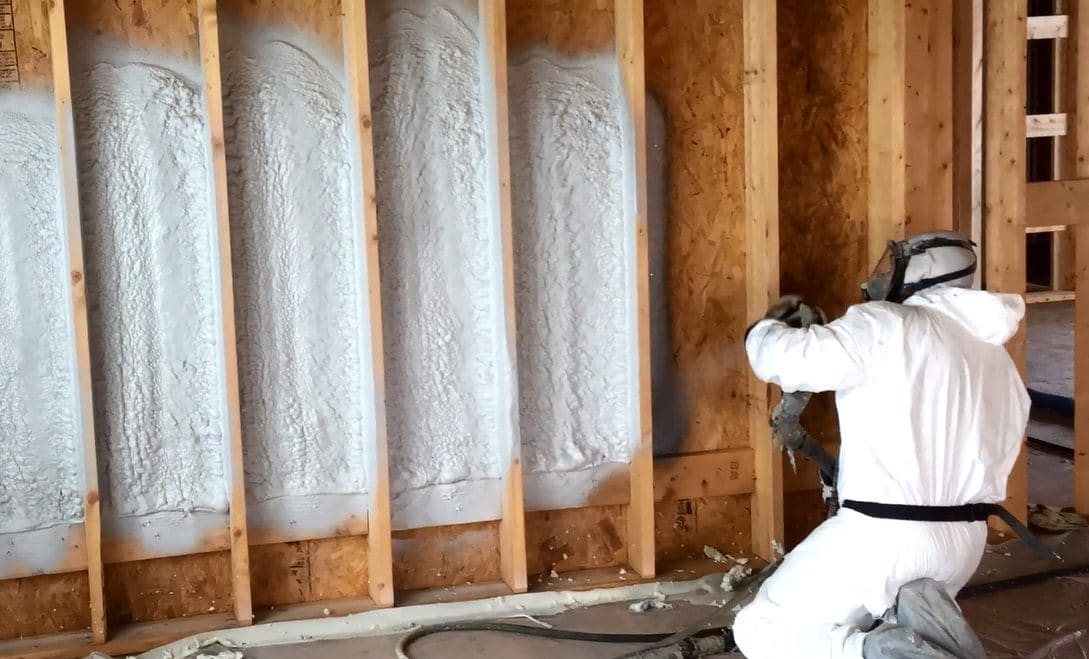Closed-cell spray foam plays a foundational role in creating energy-efficient retrofits, especially in underperforming attics where thermal leakage, moisture intrusion, and air infiltration are common. Its dense structure, excellent air sealing ability, and superior thermal performance make it one of the most effective insulation methods available for homeowners aiming to reduce long-term energy use.
When applied correctly by a qualified attic insulation contractor, closed-cell spray foam enhances the integrity of the thermal envelope. It resists moisture, prevents drafts, and offers a high R-value per inch that traditional insulation materials can’t match. These qualities are essential when retrofitting older homes, which often have leaky building envelopes and limited insulation space.
Homeowners looking for reliable retrofit upgrades often find that closed-cell spray foam improves indoor comfort, reduces HVAC loads, and extends the life of the building envelope. This material doesn’t just insulate—it seals, supports, and protects.
The Role of Closed-Cell Spray Foam in Energy-Efficient Retrofits
Closed-cell spray foam differs from open-cell foam or batt insulation in both density and function. It creates a hardened, air-impermeable surface that tightly adheres to wood, metal, or masonry substrates. This rigidity supports structural strength while simultaneously blocking air leakage, which is the most common source of energy waste in residential buildings.
Unlike loose-fill or fiberglass materials, closed-cell foam doesn’t allow air movement within the insulation layer. This property directly contributes to lowering energy use in heating and cooling. Its vapor-retarding characteristics prevent condensation, mold, and wood rot—issues that frequently arise in attic spaces when moisture is uncontrolled.
Attic retrofits using closed-cell spray foam create a continuous barrier against heat transfer and outside air. The result is a stable indoor climate that requires less mechanical intervention. Energy retrofits that include this foam type are more likely to meet or exceed modern energy code standards, making homes future-proof against rising utility costs.
Technical Specifications and Performance Characteristics
| Property | Closed-Cell Spray Foam |
|---|---|
| R-Value per Inch | R-6 to R-7 |
| Water Vapor Permeability | <1 perm (acts as vapor barrier) |
| Air Impermeability | High |
| Dimensional Stability | Excellent |
| Thickness for Attics | 2–3 inches (depending on climate) |
| Structural Support | Yes |
| Expansion Rate | Controlled (~1 inch per pass) |
| Longevity | 20–30+ years |
Each characteristic listed contributes directly to energy efficiency. A higher R-value per inch reduces the required thickness, which is particularly valuable in low-clearance attic spaces. The low permeability prevents vapor migration, lowering the risk of insulation degradation over time.
Closed-Cell Foam vs Other Retrofit Materials
| Feature | Closed-Cell Foam | Open-Cell Foam | Fiberglass Batt | Cellulose |
|---|---|---|---|---|
| R-Value (per inch) | 6.0–7.0 | 3.5–4.0 | 2.2–3.8 | 3.2–3.8 |
| Moisture Resistance | High | Low | Low | Moderate |
| Air Barrier | Yes | Partial | No | Partial |
| Structural Reinforcement | Yes | No | No | No |
| Lifespan | 20–30 years | 10–15 years | 10–15 years | 15–20 years |
| Space Efficiency | High | Medium | Low | Low |
| Best Application | Roof decks, rim joists, attics | Interior cavities | Attic floors | Attic floors |
Closed-cell foam is particularly suited to retrofit environments where wall cavities or attic slopes may have limited space. The higher insulation per inch makes it ideal for maximizing thermal resistance without increasing wall or ceiling thickness.
How Closed-Cell Foam Performs in Attic Retrofits
Attics are often the most under-insulated areas in older homes. They contribute significantly to thermal loss in winter and heat gain in summer. Air leaks around vents, light fixtures, and chimneys further degrade efficiency. Closed-cell spray foam addresses these inefficiencies in one application by sealing and insulating simultaneously.
Professionals trained in attic insulation installation apply foam directly to the underside of the roof sheathing and gable walls. This creates a thermal break that isolates the attic from external conditions. Since the foam is impermeable to air and moisture, it controls both the temperature and humidity of the space.
This method is especially useful when converting vented attics to unvented assemblies. In these cases, the foam allows the HVAC equipment to run in conditioned space, improving performance and reducing wear on the system. This strategy is particularly effective in hot-humid and mixed-humid climates, where moisture management is critical.
Things to Consider Before Making a Decision
Retrofitting with closed-cell foam isn’t a casual decision. Homeowners should evaluate several critical factors:
Building Age and Design: Older homes may have structural elements that complicate foam application. Electrical, ventilation, and existing insulation may need to be relocated or removed for proper adhesion.
Budget: Closed-cell spray foam has a higher initial cost than traditional options. However, the long-term savings often justify the investment. The material pays back through lower utility bills and fewer repairs due to moisture or air leaks.
Climate Zone: Foam thickness and performance depend on local conditions. Colder zones may require more foam for effective insulation, while humid climates benefit most from the foam’s vapor control.
Application Method: Foam should only be applied by trained professionals using certified equipment. Poor application can lead to off-ratio mixing, voids, or surface failure. A certified attic insulation contractor ensures correct installation to building code and safety standards.
Mechanical System Adjustments: Changing attic insulation may impact how HVAC systems function. Unvented attic systems may require rerouting ducts, adjusting returns, or resizing equipment to operate efficiently.
Real Market Data and Performance Insight
The U.S. Energy Information Administration reports that heating and cooling account for over 50% of residential energy consumption. Poorly insulated attics are among the largest contributors to this inefficiency. Retrofitting with closed-cell spray foam reduces thermal bridging and air leakage, leading to average energy savings between 15% and 25% annually. In high-performance retrofits, this number may reach as high as 40%, especially in leaky or poorly sealed homes.
Homes that undergo spray foam attic insulation also report improved indoor air quality due to the reduced infiltration of outdoor pollutants and allergens.
Common Questions About Closed-Cell Spray Foam in Attics
Can closed-cell spray foam be installed over existing insulation? It’s not recommended. Existing insulation should be removed to ensure proper adhesion and to prevent trapped moisture. Foam requires clean, dry surfaces.
Does the foam create ventilation issues in the attic? Closed-cell foam creates an unvented attic assembly. This changes air movement and may require mechanical ventilation or adjustments to existing HVAC systems.
What happens if there’s a roof leak? While the foam itself resists water, it can mask leaks. However, any moisture intrusion will be minimal and localized due to the foam’s barrier properties. Routine inspections remain important.
Will it shrink or degrade over time? Properly installed closed-cell foam maintains its form and performance for decades. It’s dimensionally stable and does not settle or compress like batt or blown insulation.
Is it safe to use around electrical wiring or recessed lights? Yes, but only if local codes and safety standards are followed. Certain recessed lights may require protective covers or air-tight fixtures. Your insulation professional should assess this before installation.
Bonus Tips to Maximize Retrofit Efficiency
Use foam in combination with attic air sealing techniques around ducts, vents, and access hatches to prevent minor leakage points. Also, schedule insulation upgrades during HVAC replacement projects for improved system sizing and efficiency alignment.
Check for proper drainage and roof integrity before foam application. Preventing trapped water under the foam is key to avoiding future structural damage.
Consult a building energy assessor or envelope specialist to evaluate whether the insulation thickness and coverage meet local energy codes and best practices.
Expanded FAQ Section
How long does spray foam insulation take to cure in the attic? Most foam sets within minutes, but full curing takes about 24 hours. The attic should not be re-entered until the foam has completely cured and ventilated.
Can closed-cell foam be used in cold climates? Yes. It performs very well in cold conditions by preventing heat loss and resisting vapor drive from inside to outside. However, installation temperature requirements must be followed carefully.
Is there off-gassing or odor after application? There may be a temporary odor during curing. Adequate ventilation is essential during and shortly after installation. After curing, the foam is inert and odorless.
Do I need to leave my home during installation? It depends on the scope. For whole-attic applications, temporary evacuation is often advised due to fumes from the curing process.
What’s the difference between spray foam types in an attic retrofit? Closed-cell offers higher R-values, moisture resistance, and structural rigidity. Open-cell is less dense, offers sound dampening, and is vapor-permeable. Closed-cell is preferred for foundational energy-efficient retrofits.
Final Thoughts
Closed-cell spray foam provides a long-term, high-performance solution for improving the energy efficiency of existing homes. Its ability to insulate, seal, and protect simultaneously makes it an unmatched choice for attic retrofits. When installed by a skilled attic insulation contractor, it not only lowers utility costs but also enhances comfort, durability, and air quality.
Evaluate your building structure, climate zone, and budget before proceeding. Closed-cell spray foam represents an investment in both energy savings and structural resilience. It’s not a one-size-fits-all solution, but when correctly applied, it delivers consistent and measurable performance over decades.
Cascadia Spray Foam Of Seattle
Phone: 425386-3500 Reviewer: Olivia Thompson has spent 10 years working in spray foam insulation, helping companies grow their visibility. She reviewed this article and provided valuable suggestions on how to better align the content with the needs and expectations of customers, ensuring it resonates with the target audience.
Reviewer: Olivia Thompson has spent 10 years working in spray foam insulation, helping companies grow their visibility. She reviewed this article and provided valuable suggestions on how to better align the content with the needs and expectations of customers, ensuring it resonates with the target audience.










